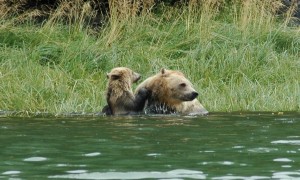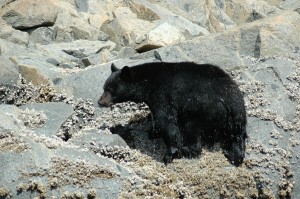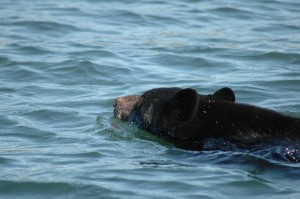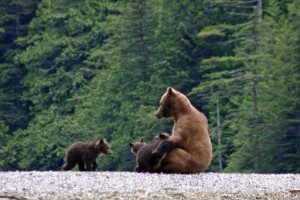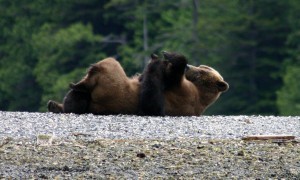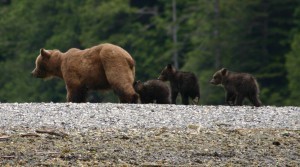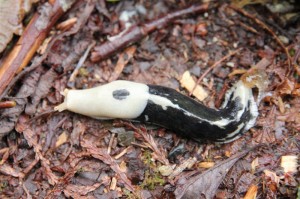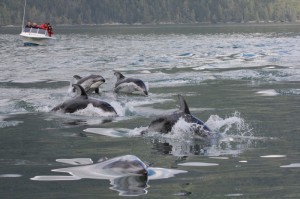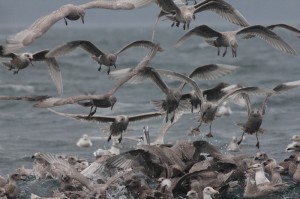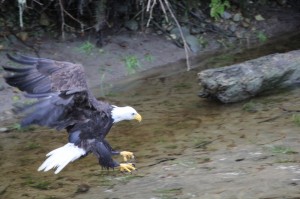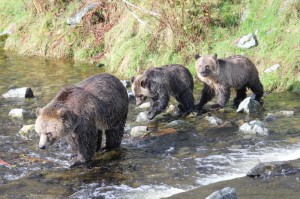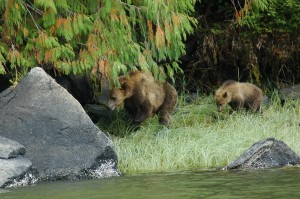
After some time in the water the mother grizzly and cub moved up the beach toward the river mouth. One can see that the tide has started to rise and the beach is disappearing and this means that the bears will move up toward the shallower estuary and river mouth. Fortunately once we arrive by boat from the lodge we switch to a large flat bottom skiff which permits us to follow the bears as they move into this shallow area. This enables good close up pictures from a stable boat, which allows guests to move about without fear of tipping or rocking. Yesterdays posted photo and today’s are just two of the many provide by Marc & Solange
